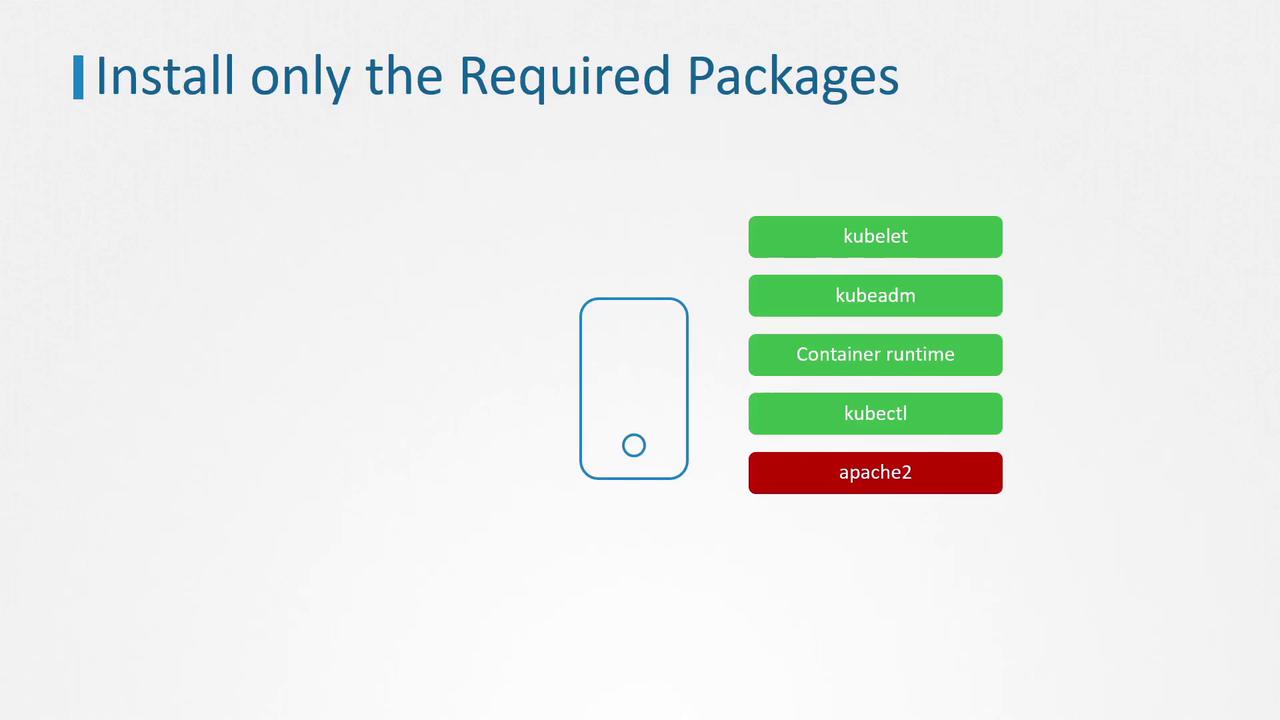Certified Kubernetes Security Specialist (CKS)
System Hardening
Remove Obsolete Packages and Services
In this guide, we'll explore best practices for keeping your system lean and secure by eliminating unnecessary packages and services. Over time, systems can accumulate software installed by default from snapshots or image templates, which increases complexity and enlarges your security attack surface.
Review Regularly
Regularly auditing installed software and services is vital. This process helps ensure that only essential components are maintained and updated with the latest security patches. For example, verify whether Apache is genuinely needed on Kubernetes cluster nodes or if it was installed inadvertently.

Managing Services with systemd
Modern Linux distributions commonly use systemd to manage services. The systemctl utility provides comprehensive control to view service status, start, and stop essential services.
For instance, to check the status of the Apache service, run:
systemctl status apache2
Loaded: loaded (/lib/systemd/system/apache2.service; enabled; vendor preset: enabled)
Drop-In: /lib/systemd/system/apache2.service.d
└─apache2-system.conf
Active: active (running) since Mon 2021-03-29 18:01:14 UTC; 1s ago
Process: 19026 ExecStart=/usr/sbin/apachectl start (code=exited, status=0/SUCCESS)
Main PID: 19037 (apache2)
Tasks: 55 (limit: 7372)
CGroup: /system.slice/apache2.service
├─19037 /usr/sbin/apache2 -k start
├─19038 /usr/sbin/apache2 -k start
└─19039 /usr/sbin/apache2 -k start
This output confirms that Apache is active and running, with its main configuration file located at /lib/systemd/system/apache2.service. While many packages install their service files automatically, some services might be manually added to launch additional processes. It is crucial to identify and manage only the services required for your environment.
Listing All Installed Services
To view all services installed on your system, use:
systemctl list-units --type service
A sample output includes:
apache2.service loaded active running The Apache HTTP Server
apparmor.service loaded active exited AppArmor initialization
containerd.service loaded active running containerd container runtime
dbus.service loaded active running D-Bus System Message Bus
docker.service loaded active running Docker Application Container Engine
ebtables.service loaded active exited ebtables ruleset management
kmod-static-nodes.service loaded active exited Create list of required static device nodes
kubelet.service loaded active running kubelet: The Kubernetes Node Agent
proxy.service loaded active running kubectl proxy 8888
systemd-journal-flush.service loaded active exited Flush Journal to Persistent Storage
Disabling Unnecessary Services
If you determine that a service file is not needed, you can disable and stop it. For example, to disable Apache:
systemctl stop apache2
systemctl disable apache2
You might see output similar to:
Synchronizing state of apache2.service with SysV service script with /lib/systemd/systemd-sysv-install.
Executing: /lib/systemd/systemd-sysv-install disable apache2
After stopping the service, remove the corresponding package. For example, to remove Apache using apt:
apt remove apache2
A sample removal process output would be:
Reading package lists... Done
Building dependency tree
Reading state information... Done
The following packages were automatically installed and are no longer required:
apache2-bin apache2-data apache2-utils libapr1 libaprutil1 libaprutil1-dbd-sqlite3
libapru1-ldap liblua5.2-0 ssl-cert
Use 'apt autoremove' to remove them.
The following packages will be REMOVED:
apache2
0 upgraded, 0 newly installed, 1 to remove and 23 not upgraded.
After this operation, 536 kB disk space will be freed.
Do you want to continue? [Y/n] Y
(Reading database ... 15908 files and directories currently installed.)
Removing apache2 (2.4.29-1ubuntu4.14) ...
invoke-rc.d: policy-rc.d denied execution of stop.
invoke-rc.d: policy-rc.d denied execution of stop.
Caution
Before purging any package, ensure that it is not required by other services or dependencies. Removing essential software may disrupt system functionality.
Further Reading
For additional best practices in configuring and managing services, refer to section 2 of the CIS Benchmarks for Distribution Independent Linux.
By following these guidelines, you can streamline your system by maintaining only the essential packages and services, thereby reducing complexity and enhancing overall security.
Watch Video
Watch video content